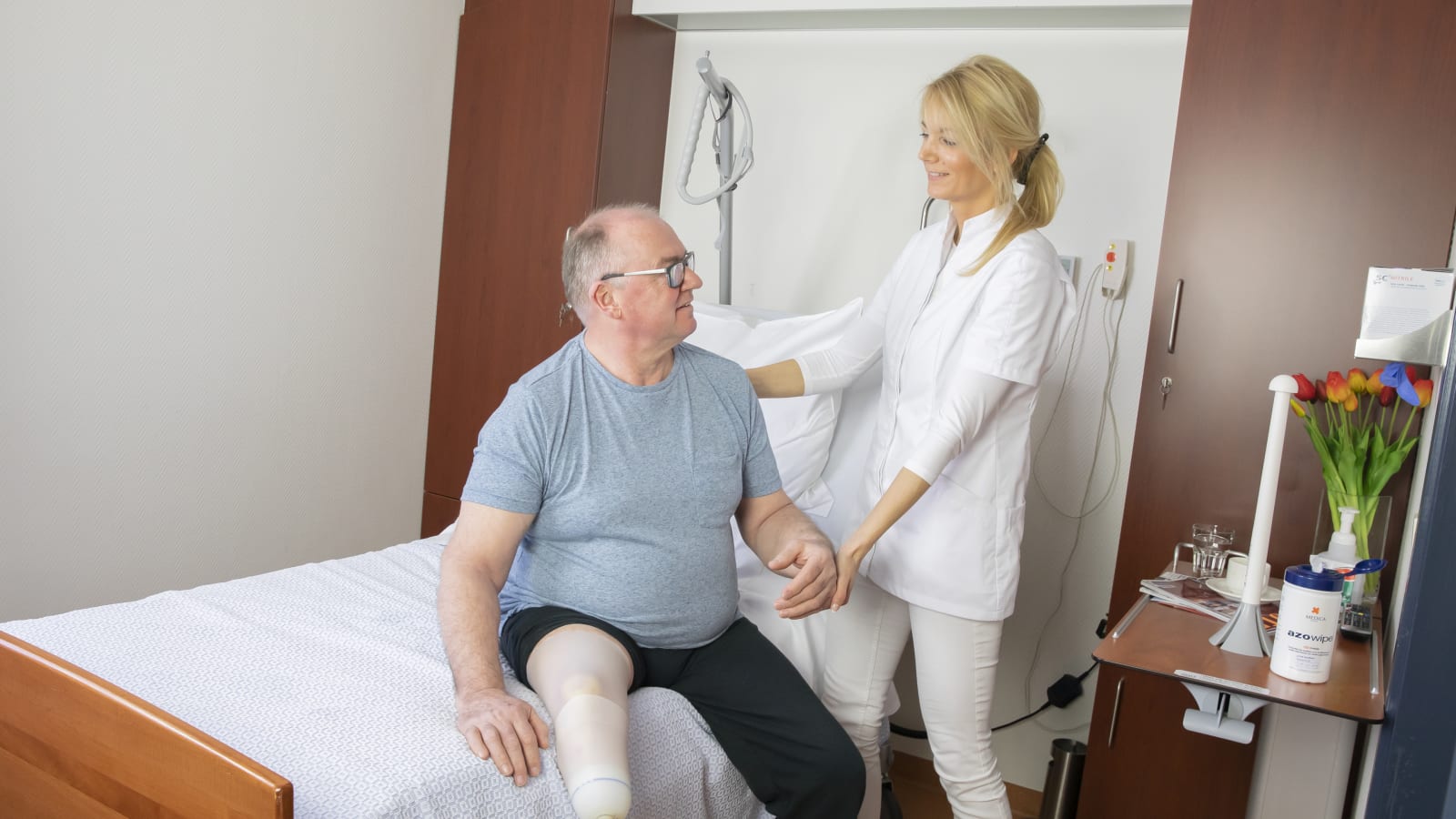How can an Older Person Recover from Leg Amputation?
Leg amputation is a life-changing event that can have a profound impact on an individual's physical and emotional well-being, particularly for older individuals. Diseases such as diabetes can increase the risk of limb loss, making it essential for older individuals with this condition to be aware of the recovery process.
Vascular disease, the main cause of amputation
Vascular disease such as diabetes is a leading cause of limb loss as it can cause nerve damage and poor blood flow, leading to foot ulcers and infections that may require amputation. The emotional toll of this life-changing event can be particularly challenging for older individuals, as it can cause a loss of independence and limited mobility.
Recovering from amputation
Recovering from leg amputation is a multi-step process that requires time, patience, and a supportive network of professionals and loved ones. It is important to work closely with a medical team that includes a surgeon, physical therapist, and prosthetist, to ensure that the individual's needs are met at each stage of the recovery process.
> Article suggestion: How to Help an Amputee Adapt to Life After Losing a Limb?
Physical recovery
Physical therapy is a crucial component of leg amputation recovery for older individuals. A skilled physical therapist can help the individual learn how to use the prosthesis, develop strength and endurance, and improve their balance and mobility. It is important to work closely with the physical therapist and follow their recommendations for at-home exercises and self-care. This helps in achieving better leg amputation recovery for older adults.
Emotional recovery
Emotional support is also essential during the recovery phase for older individuals who have undergone leg amputation. Losing a limb can be a traumatic experience that can lead to feelings of grief, depression, and anxiety. It is important to seek out supportive resources such as counseling or support groups to help cope with these feelings.
Time is key
The recovery process after leg amputation can take time and patience, particularly for older individuals. However, with the right support and resources it is possible to adapt to a prosthetic limb and continue to live a full and active life. Older adults who have undergone leg amputation can benefit from connecting with peer support groups, which can provide a sense of community and inspiration to meet the challenges of recovery.
Social support can come in different shapes and forms like getting involved with charities such as Limb Power https://www.limbpower.com/ to receive support, or through amputee discussion pages on social media, such as https://www.facebook.com/limblessassociation.
Choosing the prosthetic solution
The recovery process may also involve adjustments to the prosthesis as the individual's needs change. It is important to work closely with the prosthetist to ensure that the prosthesis is properly fitted and adjusted for the best possible comfort and function. This is crucial to ensure better leg amputation recovery for older adults.
> Article suggestion: Choosing the Right Prosthesis for Elderly Amputees
Leg amputation is a life-changing event that can be particularly challenging for older individuals. Diseases such as diabetes can increase the risk of limb loss, making it essential for older adults with this condition to be aware of the recovery process. By working closely with a medical team, seeking emotional support, and staying committed to the recovery process, older individuals can overcome the challenges of leg amputation and continue to thrive. Leg amputation recovery for older adults is possible with the right resources, support, and dedication.
